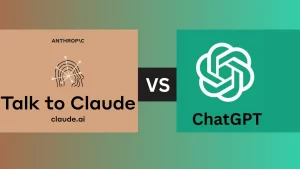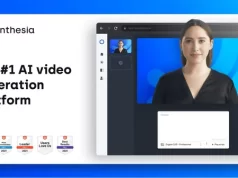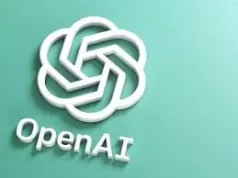There are a lot of features that claude Ai has that chatgpt do not possess but these 4 capabilities of Claude AI That ChatGPT Lacks are Incredible


ChatGPT is frequently regarded as the premier AI chatbot in the field. The free version of ChatGPT, powered by the substantial GPT-3.5 large language model (LLM), held the distinction of being the most extensive and potent of its kind until the arrival of GPT-4. GPT-4, however, is exclusively accessible through a $20 monthly subscription to ChatGPT Plus.


Join our Telegram Channel for Updates
The remarkable success of ChatGPT upon its initial release served as a catalyst, prompting other companies to introduce their own AI chatbots to the public. Examples of such chatbots include Microsoft’s Bing AI, Google’s Bard, and Anthropic’s Claude, among others.
Anthropic, a company specializing in AI safety and research, recently introduced the latest iteration of its AI chatbot, Claude 2. Subsequently, it has become evident that this generative AI tool offers distinct advantages over OpenAI’s free version of ChatGPT.
ChatGPT is widely acknowledged as one of the most prominent AI chatbots available. Fueled by the formidable GPT-3.5 large language model (LLM), the free version of ChatGPT stood as the largest and most potent in its category, with GPT-4 surpassing it, exclusively accessible through a $20 monthly subscription to ChatGPT Plus.
The successful launch of ChatGPT prompted other companies, such as Microsoft with Bing AI, Google with Bard, and Anthropic with Claude, to introduce their AI chatbots to the public.
Furthermore, it’s worth noting that ChatGPT and Claude each possess unique strengths, making them suitable for different purposes. Determining which AI to employ in specific circumstances depends on the specific requirements and preferences of the user.
Offer Post-2021 Information
Claude’s training encompasses data up until December 2022, and Anthropic suggests that it may possess knowledge of certain events extending into early 2023. In contrast, ChatGPT’s training is based on data available up until September 2021. While neither AI chatbot has internet access, Claude possesses information that exceeds ChatGPT’s, including details about products introduced by Apple in the previous year and specifications of the Galaxy S23 series of smartphones launched in February 2023.
Claude excels at reading, analyzing, and summarizing uploaded files, setting it apart from ChatGPT
Claude provides a significant advantage by allowing users to easily incorporate files into their conversations. Users can upload files by either clicking the attachment button or simply dragging and dropping them into the text input area. It’s possible to add up to five files simultaneously, each with a maximum size of 10MB.
When a user uploads a file and submits it without additional instructions, Claude automatically generates a summary of the content. However, summarization is just one of its advantages. Once text or a file is introduced into the conversation, the AI chatbot becomes acquainted with the content and maintains context throughout the ensuing discussion.
Consequently, users can ask Claude follow-up questions specifically related to the document or text, seeking explanations for aspects not covered in the summary or addressing areas of confusion. For instance, if a user adds a medical study in PDF format to a chat with Claude, the chatbot learns the study’s content, enabling users to pose targeted queries like, “What was the study’s primary objective?” or “What percentage of participants exhibited X results?”
It’s important to note that the uploaded files can include Word documents, PDFs, .txt files, .csv files, and others. While it doesn’t directly handle Excel spreadsheets, users can convert them to PDF format and then upload them to Claude for summarization.
Handle a Larger Volume of Text than ChatGPT
Claude 2.0 was introduced with an impressive capacity of 100,000 tokens, allowing for extended input and output. This substantial capability enables users to input approximately 75,000 words in each interaction.
Claude’s 100,000-token context surpasses ChatGPT’s 8,000-token context. Context plays a crucial role in empowering large language models (LLMs) to generate nuanced, natural language. LLMs draw upon extensive training datasets to understand the contextual relationships between words and phrases.
In simpler terms, context encompasses background information such as prior chat interactions, ongoing conversation within a chat, and user preferences. This contextual knowledge provides the AI bot with a deeper comprehension of the ongoing dialogue or the ability to apply user-specific settings. Typically, a broader context contributes to more accurate and contextually relevant information during a conversation. For instance, context helps the AI chatbot differentiate whether a user is referring to a “bat” in the context of sports equipment or as an animal.
Claude’s expansive context equips it to process and summarize lengthy documents, including scientific and medical studies, books, and reports. Additionally, it allows Claude to generate lengthy text passages, spanning several thousand words when necessary.
Retrieve and Partially Summarize Content from Links
Users have the capability to not only include documents within the conversation with Claude but also share links for the chatbot to summarize the linked content. It’s important to note that when incorporating links, Anthropic advises that Claude may occasionally generate content inaccuracies, a phenomenon I found to be true in about one-third of instances.
To illustrate, the following example showcases how Claude attempted to “summarize” a Wall Street Journal article. When provided with only the link on the left, Claude’s summary diverged significantly from the actual content. It notably erroneously stated that the debate about restaurant tipping was taking place in New York City instead of Chicago, thus altering the primary subject of the article.
The ability of Claude to seemingly access content via links raises concerns about potential bypassing of paywalls, which could potentially infringe upon copyright laws. To investigate this, I provided Claude with paywalled links to assess its capabilities. The summaries provided by Claude were similar to those generated when provided with copied text, albeit with occasional inaccuracies or hallucinations.
In summary, it is advisable not to rely on Claude’s summarization of content obtained through links, as the results can be significantly off the mark. However, the summarization feature holds promise, provided that measures are implemented to respect paywalled content and address inaccuracies.












